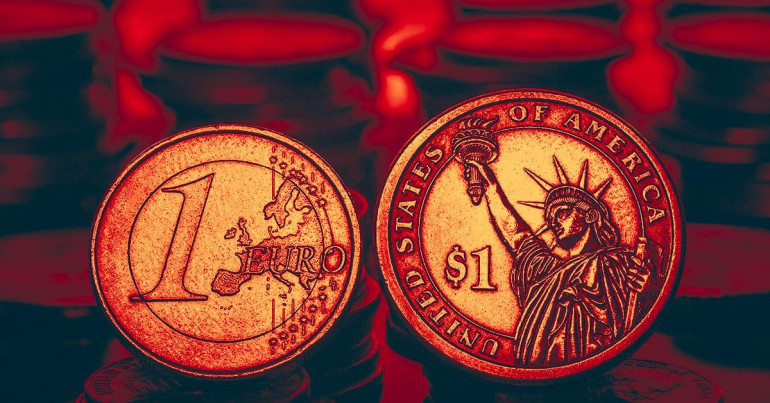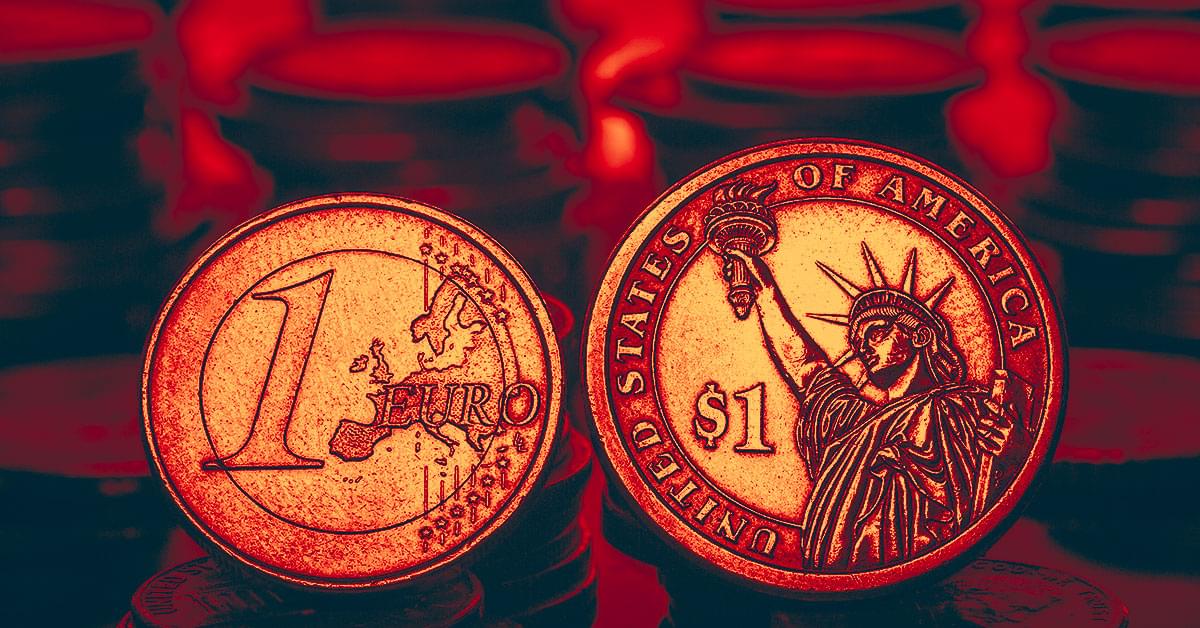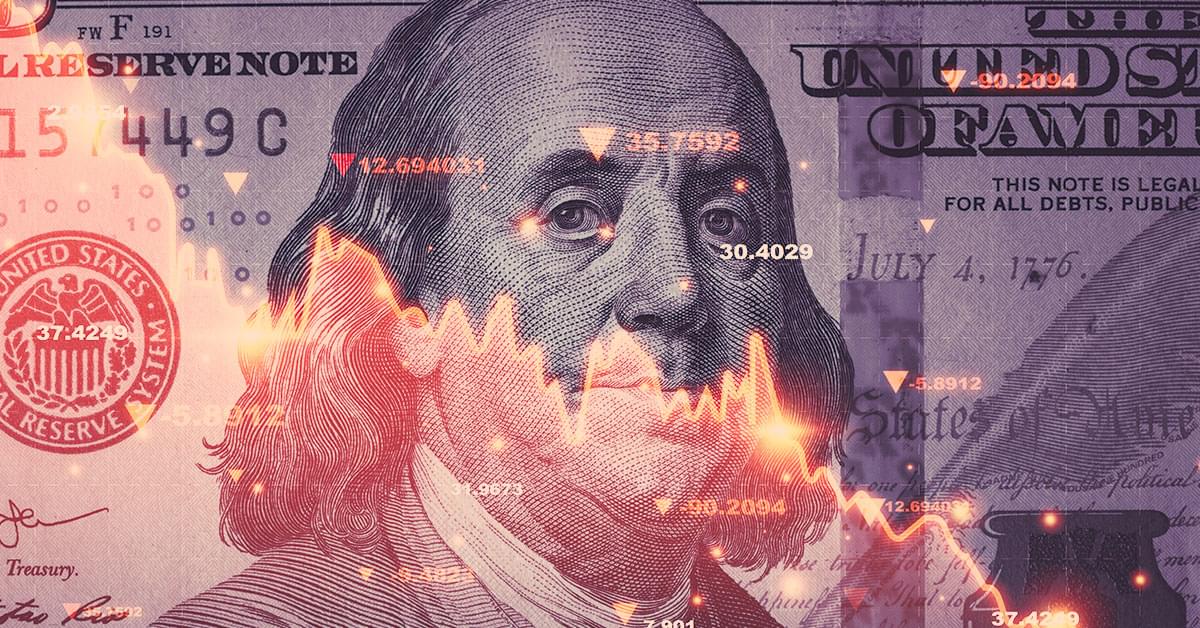
The euro and the dollar are some of the world’s largest and most widely used currencies, and their forex pair is the most traded forex pair in the world. The nickname for the EUR/USD exchange rate is the ‘fiber’, although it is often simply referred to as ‘trading the euro’ (as the USD is present in all the major currency pairs).
The euro is one of the newest large currencies in the world and has only been in circulation since the year 1999. The dollar makes up around 58% of all global reserves, and the euro around 20%, meaning that over three-quarters of the world’s reserves are held in these two currencies.
Our article covers the exchange rate, how it came about, and potential changes that might come to this forex pair.

Why did the EU adopt the euro?
In order to secure peace in Europe after 1945, European countries began working together, and gradually formed an alliance, which culminated in the establishment of the European Union in 1993 in Maastricht. A common currency for Europe had been proposed for an equal amount of time.
The euro was officially launched on January 1st 1999 and rolled out first as an ‘invisible currency’ which meant that it was only used between banks for accounting purposes. The first coins and notes were issued on January 1st 2002 to 12 countries which also retired their old currencies.
Not all countries within the European Union have adopted the euro, and some countries such as Poland and Sweden have no set date for when they will adopt the euro. Denmark has officially opted out of the euro.
The euro was created to solidify the union between these newly tied European countries and to create a bloc that would be strong enough to compete on the world stage.
In some ways, the euro was created as a challenge to the US dollar. Due to the widespread use of the dollar, and the existence of so-called eurodollars, the dollar has significant control over the world economy, which is known as dollar dominance.
The US dollar is still the world’s reserve currency, but the euro gives Europe greater control over its own economy as one bloc, which is known as the eurozone. The EUR/USD is a signifier of this relationship.
History of the EUR/USD exchange rate
In regards to forex, the relationship between these two currencies is incredibly important. The EUR/USD currency pair is the most frequently traded pair in the forex world. It is the most liquid currency pair too and has tight spreads, which makes it an attractive option for risk-averse traders.
The following data on the EUR/USD exchange rate has been pulled from Macro Trends.
1999-2002
Upon its establishment, the euro suffered a slip as it encountered some teething problems and a general lapse of confidence. Starting at a reasonable $1.15, the euro slipped to around $0.82 in 2000 after Denmark voted to reject the euro and keep the krone.
2002-2005
From 2002 to 2005, the euro saw a strong recovery from this initial slump, and overtook the dollar in light of the dot-com bubble burst, soaring up to reach $1.35 at the end of 2004.
2005-2010
After an initial weakening of the euro, down to $1.17 in 2005, a slip in the US economy, running up to the subprime mortgage crisis and Great Recession caused the euro to rally strongly, reaching its all-time high of around $1.6 in July 2008.
The exchange rate then fluctuated rapidly as the world began to reel from the effects of the US crash, and the Eurozone debt crisis struck in 2009, causing another slip in the euro.
2010-2012
The debt crisis in Europe caused several countries such as Greece and Portugal to undergo economic slowdown, and in the case of Greece, social unrest. This caused the euro to drop in value as the strength of the currency was tested. However, due to the US’s own financial woes in this period, the exchange rate was not affected too strongly.
2012-2019
One of the sharpest drops in the EUR/USD exchange rate was from 2014-2015. The recovery of the US dollar, implementation of quantitative easing, and fears of Greece reviving another debt crisis across the eurozone were high. From $1.39 in March 2014, by March 2015, the euro was at $1.08.
2019-Present
The EUR/USD has remained relatively stable since and solidified itself as the strongest trading pair in the forex world. The Russia-Ukraine war and subsequent energy crisis caused the euro to slip below the dollar to $0.96 in 2022, but it has since recovered.
As per FX Street’s data, the euro reached an all-time high of 1.6038 in July of 2008 in light of the mortgage crisis, and a record low of 0.8231 in October 2000 as initial optimism about the euro began to wobble.

Future of the EUR/USD exchange rate
Suggestions that the US dollar might collapse are generally unfounded, but there are suggestions that the sun might be setting on dollar dominance. The euro’s rising significance in the world economy, as well as the yuan, suggests that the dollar might not stay the global reserve currency forever.
As CBDCs rise, and central banks start to take more interest in them, the relationship between the two currencies may be affected. The ECB has already started testing for the digital euro, which would allow greater control over the euro. The US banking system is known for being slower and more inefficient, compared to other countries. As the world shrinks and civilians become more international, they may begin to favour countries with more efficient payment systems, particularly ones which have adopted modern processes such as CBDCs.
If you need to exchange euros and dollars, CurrencyTransfer makes transferring money effortless. Sign up for free, and you’ll get an allocated account manager to assist you with your personal and business payments.
Caleb Hinton
Caleb is a writer specialising in financial copy. He has a background in copywriting, banking, digital wallets, and SEO – and enjoys writing in his spare time too, as well as language learning, chess and investing.



